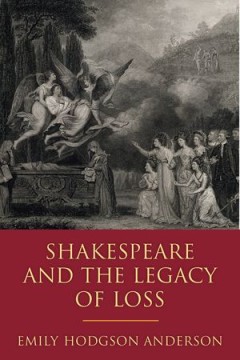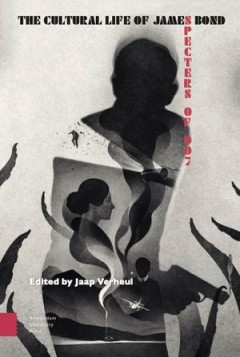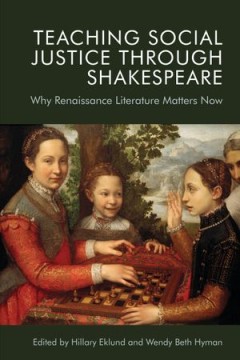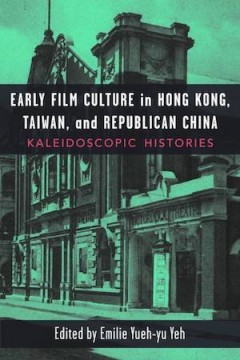Filter by

Text and Genre in Reconstruction: Effects of Digitalization on Ideas, Behavio…
this broad-reaching, multi-disciplinary collection, leading scholars investigate how the digital medium has altered the way we read and write text. In doing so, it challenges the very notion of scholarship as it has traditionally been imagined. Incorporating scientific, socio-historical, materialist and theoretical approaches, this rich body of work explores topics ranging from how computers ha…
- Edition
- -
- ISBN/ISSN
- 9781906924263
- Collation
- -
- Series Title
- -
- Call Number
- -

Shakespeare and the Legacy of Loss
How do we recapture, or hold on to, the live performances we most love, and the talented artists and performers we most revere? Shakespeare and the Legacy of Loss tells the story of how 18th-century actors, novelists, and artists, key among them David Garrick, struggled with these questions through their reenactments of Shakespearean plays. For these artists, the resurgence of Shakespeare, a pl…
- Edition
- -
- ISBN/ISSN
- 9780472130931
- Collation
- -
- Series Title
- -
- Call Number
- 792 EMI s

Testimony from the Nazi Camps
This interdisciplinary study intergrates historiographical, literary and cultural methodologies in its focus on a little known corpus of testimonial accounts published by French women deported to Nazi camps. Comprising epistemological and literary analyses of the accounts and an examination of the construction of deportee identities, it will interest those working in the fields of modern French…
- Edition
- -
- ISBN/ISSN
- 9780203339787
- Collation
- -
- Series Title
- -
- Call Number
- -

Terraforming: Ecopolitical Transformations and Environmentalism in Science Fi…
Terraforming is the process of making other worlds habitable for human life. Its counterpart on Earth—geoengineering— is receiving serious consideration as a way to address climate change. Contemporary environmental awareness and our understanding of climate change is influenced by science fiction, and terraforming in particular has offered scientists, philosophers, and others a motif for t…
- Edition
- -
- ISBN/ISSN
- 9781781382844
- Collation
- -
- Series Title
- -
- Call Number
- -

The Cultural Life of James Bond: Specters of 007
The release of No Time To Die in 2021 heralds the arrival of the twenty-fifth installment in the James Bond film series. Since the release of Dr. No in 1962, the cinematic James Bond has expedited the transformation of Ian Fleming's literary creation into an icon of western popular culture that has captivated audiences across the globe by transcending barriers of ideology, nation, empire, gende…
- Edition
- -
- ISBN/ISSN
- 9789048532117
- Collation
- -
- Series Title
- -
- Call Number
- 791.43 CUL c

Tennyson’s Poems
"In Tennyson’s Poems: New Textual Parallels, R. H. Winnick identifies more than a thousand previously unknown instances in which Tennyson phrases of two or three to as many as several words are similar or identical to those occurring in prior works by other hands—discoveries aided by the proliferation of digitized texts and the related development of powerful search tools over the three dec…
- Edition
- -
- ISBN/ISSN
- 9781783746637
- Collation
- -
- Series Title
- -
- Call Number
- -

The Enemy in Contemporary Film
While filmic representations of ‘enemies’ are legion, film studies have so far neglected the way in which filmic mediations of enemy images have contributed to shaping cultural memories. The present volume investigates the (de)(re)constructions of enemy images in international film since the 1970s. The three parts deal with (re)configurations of the enemy in contemporary global cinemas, ana…
- Edition
- -
- ISBN/ISSN
- 9783110589924
- Collation
- -
- Series Title
- -
- Call Number
- 791.43 ENE e

Teaching Social Justice Through Shakespeare
This book provides diverse perspectives on Shakespeare and early modern literature that engage innovation, collaboration, and forward-looking practices.
- Edition
- -
- ISBN/ISSN
- 9781474455602
- Collation
- -
- Series Title
- -
- Call Number
- -

Early Film Cultures in Taiwan, Hong Kong, and Republican China: Kaleidoscopic…
This collection explores the complex world of early cinema in China, Hong Kong, and Taiwan. The story of how cinema established itself in China has not been well-understood. Cultural models for cinema-going and industry practices varied widely across China. By looking at several centers of cinematic activity, going beyond commercial fiction film to include non-fiction films (such as educational…
- Edition
- -
- ISBN/ISSN
- 9780472073726
- Collation
- -
- Series Title
- -
- Call Number
- 791.43 YEH e

The Un-Americans: Jews, the Blacklist, and Stoolpigeon Culture
In a bold rethinking of the Hollywood blacklist and McCarthyite America, Joseph Litvak reveals a political regime that did not end with the 1950s or even with the Cold War: a regime of compulsory sycophancy, in which the good citizen is an informer, ready to denounce anyone who will not play the part of the earnest, patriotic American. While many scholars have noted the anti-Semitism underlying…
- Edition
- -
- ISBN/ISSN
- 9780822344674
- Collation
- -
- Series Title
- -
- Call Number
- 791.43 LIT u
 Computer Science, Information & General Works
Computer Science, Information & General Works  Philosophy & Psychology
Philosophy & Psychology  Religion
Religion  Social Sciences
Social Sciences  Language
Language  Pure Science
Pure Science  Applied Sciences
Applied Sciences  Art & Recreation
Art & Recreation  Literature
Literature  History & Geography
History & Geography